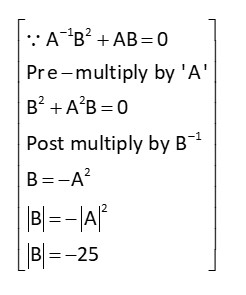Maths
Get insights from 6.5k questions on Maths, answered by students, alumni, and experts. You may also ask and answer any question you like about Maths
Follow Ask QuestionQuestions
Discussions
Active Users
Followers
New answer posted
2 months agoContributor-Level 10
If x = y,
R is not reflexive
R is symmetric
R is not transitive.
New answer posted
2 months agoContributor-Level 9
Clearly mean will increase by 5 units and variance will be un changed so the sum would be
.
New answer posted
2 months agoContributor-Level 10
|x|- 1| is not differentiable at x = -1, 0, 1
|cospx| is not differentiable at x =
-
New answer posted
2 months agoContributor-Level 10
Put x³/² = t
√xdx = (2/3)dt
⇒ (2/3) ∫ dt/√ (1-t²) = (2/3)sin? ¹t + c
= (2/3)sin? ¹x³/² + c
⇒ g (x) = sin? ¹x
g (0) = 0
Taking an Exam? Selecting a College?
Get authentic answers from experts, students and alumni that you won't find anywhere else
Sign Up on ShikshaOn Shiksha, get access to
- 65k Colleges
- 1.2k Exams
- 679k Reviews
- 1800k Answers


